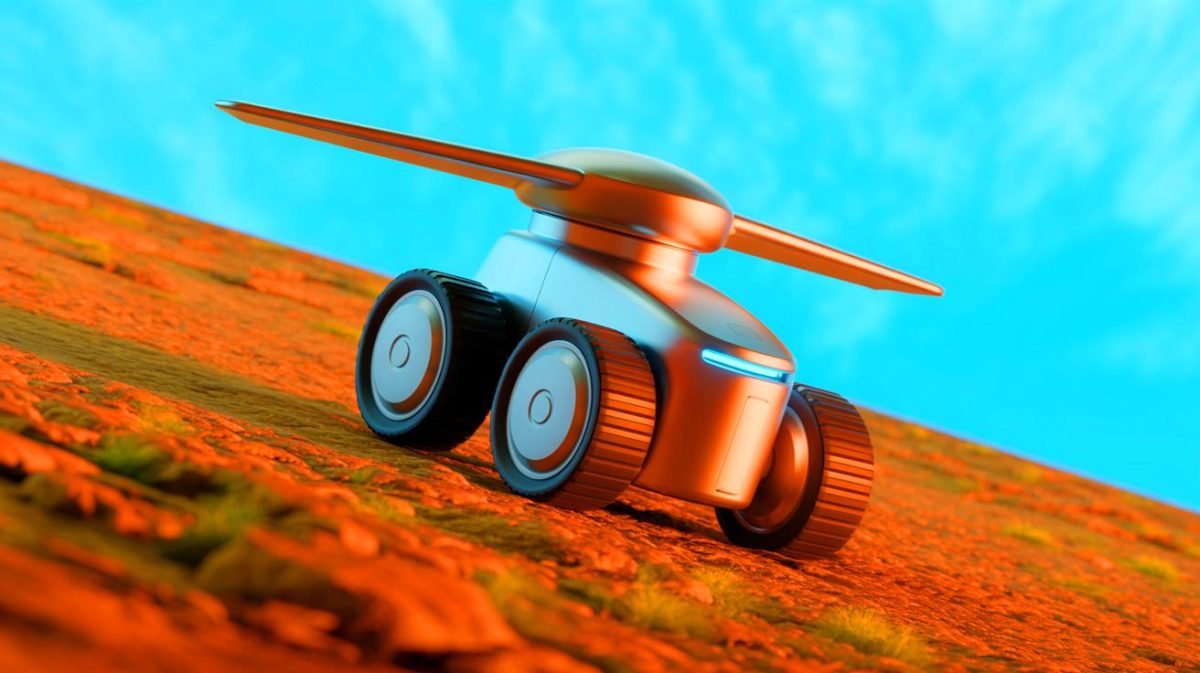| IN A NUTSHELL |
|
In an era where technological advancements are reshaping the boundaries of what’s possible, the introduction of the dual-mode robot ATOM marks a significant leap forward. Designed with energy efficiency and adaptability at its core, ATOM is a testament to the innovation emerging from the Singapore University of Technology and Design. With its unique ability to both soar through the air and roll on the ground using just two actuators, ATOM sets a new standard in the field of robotics. This breakthrough addresses the long-standing challenge of combining mobility with energy conservation, offering a glimpse into the future of versatile robotic systems.
The Genius Behind ATOM’s Design
The genius of ATOM lies in its energy-efficient design and recovery-ready frame. Unlike typical hybrid robots that rely on multiple motors and complex mechanisms, ATOM operates with just two counter-rotating actuators. This simplicity not only reduces weight but also minimizes energy consumption. The robot’s mono-wing design is a pioneering achievement, allowing it to switch seamlessly between flight and ground modes. In flight, ATOM resembles a spinning wheel, capable of rotating in both clockwise and anticlockwise directions. This versatility in movement is rarely seen in mono-wing robots and presents a significant advantage in varied environments.
On the ground, ATOM’s frame serves as its primary navigation tool. By utilizing a reverse thrust mechanism, the robot can execute smooth turns even when encountering resistance. This adaptability ensures that ATOM can handle different terrains with ease, making it a promising candidate for numerous applications. The robot’s design is not just about achieving dual mobility; it’s about doing so with an elegance that conserves energy and enhances functionality.
Exploring the Gaps in Robotics
ATOM may stand as a groundbreaking innovation, but the journey to its creation was paved with numerous attempts and challenges. Previous designs, like the mono-wing robot proposed by Suhadi et al. in 2023, faced significant hurdles. These robots struggled with ground friction and were limited to smooth surfaces. Moreover, their flight capabilities were restricted to a single direction, which hampered their control and maneuverability.
Other designs, such as those by Jia et al. and Zheng et al., incorporated additional actuators or transformable frames, which increased weight and energy consumption. A common flaw among these hybrid robots was their inability to self-right if they landed upside down, necessitating manual intervention. ATOM, however, circumvents these limitations through its wheeled frame and innovative design, ensuring it can recover from any orientation autonomously. This ability to self-right and handle rough surfaces with reduced drag sets ATOM apart from its predecessors.
Potential Applications and Future Prospects
The potential applications for ATOM are vast and varied. Its efficient mobility and recovery-readiness make it an ideal candidate for search and rescue operations, particularly in disaster-stricken areas. ATOM can be deployed to fly into collapsed structures and roll through debris paths to locate survivors. In environmental monitoring, the robot can move between distant waypoints, collecting sensitive data without disturbing the ecosystem. Its ability to combine overhead observation with low-energy ground patrolling could revolutionize urban surveillance, offering a discreet and efficient solution.
As the field of robotics continues to evolve towards leaner and smarter systems, ATOM serves as a reminder that innovation doesn’t always mean adding more complexity. Sometimes, it’s about refining existing capabilities to achieve remarkable results. By doing just enough, ATOM paves the way for future advancements in dual-mode robotics, promising a future where machines are both intelligent and efficient.
In conclusion, ATOM represents a pivotal step forward in robotics, offering a harmonious blend of energy efficiency and versatile mobility. As researchers and developers continue to explore the potential of such designs, one can’t help but wonder: What other groundbreaking innovations lie on the horizon, waiting to reshape the future of robotics?
Did you like it? 4.4/5 (29)








Wow, this could really change the way we think about robots! 🚀
Do you think ATOM will actually be used in search and rescue missions soon?
It’s amazing to see how far robotics has come. Thank you for sharing this innovation!
Why did they choose to use just two actuators? Seems limiting 🤔
Isn’t this just a glorified drone? What’s the big deal?
Can’t wait to see how this technology evolves in the future.
This sounds like science fiction! Are there any videos of ATOM in action? 😊
How does the mono-wing design actually work in practice? I’m curious!
It’s incredible how they managed to make it so energy-efficient.
Sounds impressive, but what about the cost? Is it affordable for widespread use?
Does ATOM have any limitations when it comes to bad weather conditions?